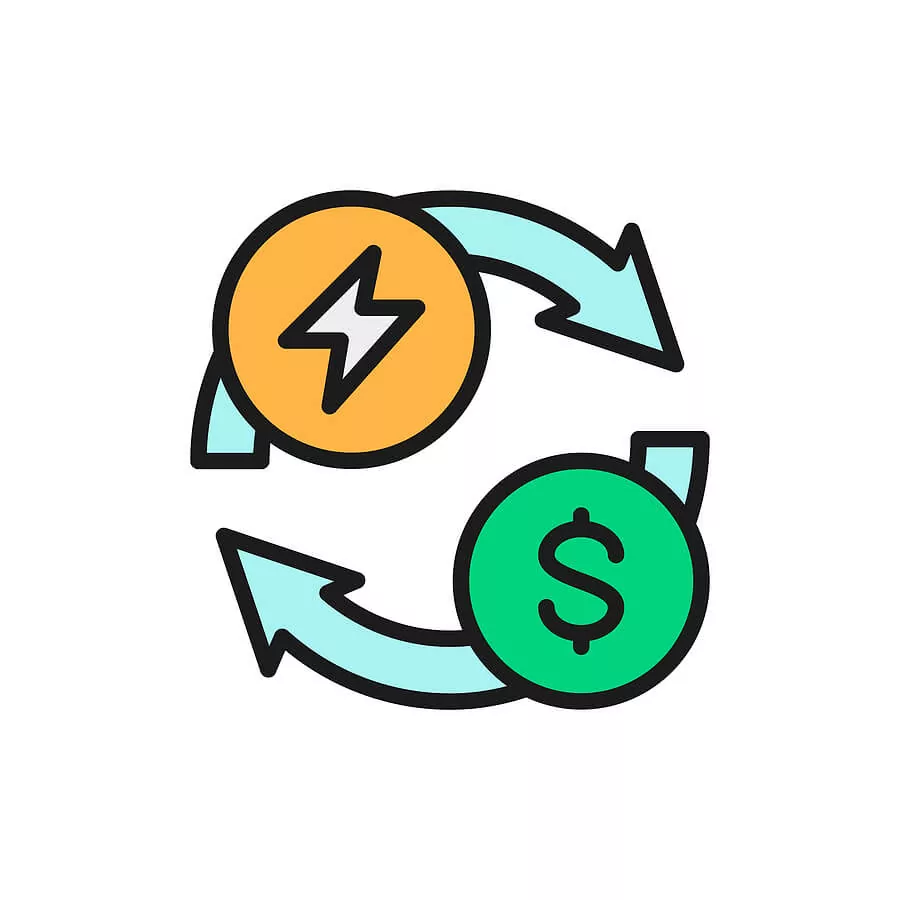
The energy industry is constantly evolving, and it can be difficult to keep up with the latest trends and technologies. However, if you’re a business owner or facility manager, it’s important to be aware of the changes taking place.
This article provides an overview of how to navigate total energy use successfully in 2023. It covers energy procurement, energy efficiency, energy generation, and energy optimization as a whole.
What is Energy Optimization?
Energy Optimization is achieved when you are using the least amount of utility supplied energy and paying the lowest price possible.
One of the main benefits of energy optimization is cost savings. A good starting point is to use technology, data and analytics to make more informed decisions about energy usage and energy procurement decisions. The technology used for optimized energy solutions includes data-driven algorithms and predictive models that can be used to anticipate energy needs before they happen as well as review the historical data. This is especially important for businesses that have energy-intensive processes, such as those in the manufacturing and agricultural industries but is beneficial for all businesses.
Energy Procurement
The past 6 months have shown how volatile the energy markets can be, and change dramatically in a short-period of time, potentially increasing your costs substantially. The information you gain regarding how, when and why energy is used in your facility can be extremely helpful when determining the best utility buying strategies.
There are two main types of energy procurement: short-term and long-term. Short-term energy procurement is typically used to cover energy needs for a period of one year or less. Short-term options should be considered when the markets are high. Long-term energy procurement is used to cover energy needs for a period longer than one year and should be considered when prices are lower.
When choosing an energy procurement strategy, businesses should consider their energy needs, objectives, sustainability goals and risks. The most common energy procurement strategies are:
- purchasing energy through the spot market
- purchasing energy through energy futures contracts
- entering into an energy hedging agreement
- signing a power purchase agreement with renewable energy generation facility
Power purchase agreements (PPAs) are legal agreements between two parties, in which one party agrees to purchase energy from the other party. PPAs are typically long-term contracts and used in the partnerships of renewable energy projects.
Power purchase agreements can help to stabilize energy prices and help you decrease your carbon footprint without investing in building a renewable energy project.
You can also purchase "green recs" with your energy futures contract to lower your carbon footprint. Green recs can be a relatively inexpensive answer to carbon reduction mandates.

Energy Contract Assessment
What type of energy procurement contract is best for my facility?
Energy Efficiency
By using energy data and analytics to understand their energy use, businesses can identify areas for energy savings. Reducing energy consumption through efficiency will reduce greenhouse gas emissions, improve bottom line profitability and improve energy security. This can include energy-efficient equipment, scheduling energy-intensive processes so they happen during off-peak times and establishing preventative maintenance programs for the equipment.
Several types of utility rebate and energy efficiency programs exist to help you fund your energy efficiency upgrades. In addition, there may be federal and/or state tax benefits as well as grants available. As an example, the permanent EPAct 179D tax deduction for building energy efficiency was recently updated as part of the Inflation Reduction Act and this update can provide a significant opportunity for taxpayers. Taking advantage of any of these subsidies can improve the ROI of the project and ultimately assist in improving the energy optimization of your facility.
Renewable Energy
Switching to clean renewable energy can help businesses reduce costs and risks today and into the future. It also has the potential to help you attract new customers and clients.
There is no better time to capture the benefits of renewable energy and set your business up for success. The price of equipment has come down over the years and due to the recently passed Inflation Reduction Act renewable energy projects may qualify for a 30% transferable tax credit, The IRA also expands federal incentives for businesses that want to acquire energy storage (battery), which is a key component in achieving energy resiliency and potential savings.
The challenges of implementing renewable energy systems for commercial or industrial facilities are numerous and varied. They include everything from the initial cost of investment to the ongoing maintenance and upkeep of the system. Additionally, there are challenges related to the integration of the system into the existing power grid, as well as the potential for disruptions to business operations. There are many outside investors who are interested in partnering on renewable energy systems which allows companies to still save money and maintain the environmental benefits without investing the upfront capital.
Despite these challenges, there are many benefits to implementing renewable energy systems, such as reducing dependence on fossil fuels, reducing greenhouse gas emissions, and providing a hedge against rising energy costs. With the right planning and execution, these challenges can be overcome and the benefits realized.
Conclusion
Energy optimization is an essential part of any successful business in the 21st century. By using data and analytics to understand how, when, and why energy is used, businesses can identify areas where efficiency can be improved and make better informed decisions about their energy usage. In 2023, the energy industry will continue to evolve, and businesses will have access to more sophisticated energy optimization tools. Investing in renewable energy sources can help businesses reduce their energy costs and make their operations more sustainable in the long run. By understanding the energy industry and incorporating energy optimization into their business processes, businesses can save money and reduce their energy usage.
